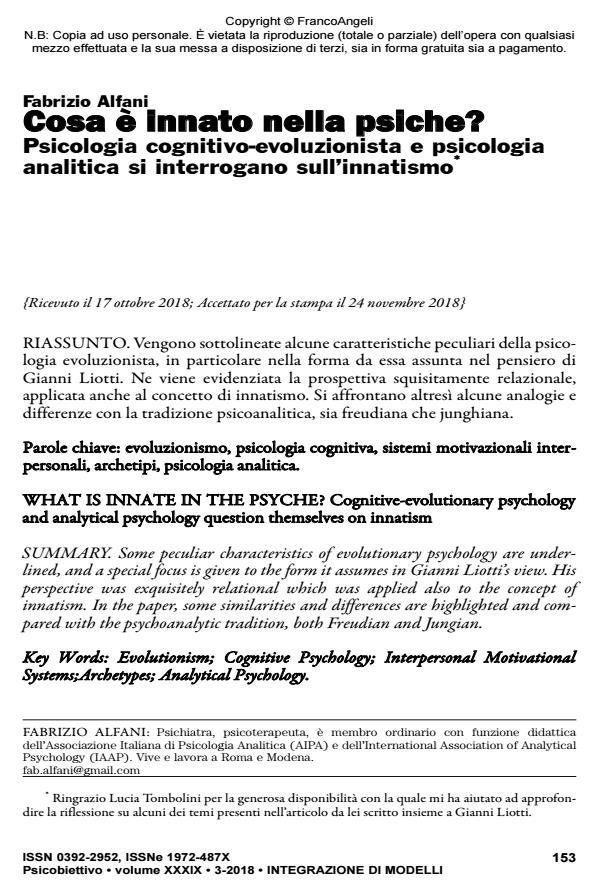Archetypes and motivational systems: suggestions for a comparison between analytical psychology and cognitive-evolutionary psychology
Journal title PSICOBIETTIVO
Author/s Lucia Tombolini, Giovanni Liotti
Publishing Year 2018 Issue 2018/3
Language Italian Pages 12 P. 141-152 File size 120 KB
DOI 10.3280/PSOB2018-003014
DOI is like a bar code for intellectual property: to have more infomation
click here
Below, you can see the article first page
If you want to buy this article in PDF format, you can do it, following the instructions to buy download credits

FrancoAngeli is member of Publishers International Linking Association, Inc (PILA), a not-for-profit association which run the CrossRef service enabling links to and from online scholarly content.
This paper dwells on the noteworthy similarities between the concepts of interpersonal motivational system, formulated by cognitive-evolutionary psychology, and the concept of archetype in analytical psychology. Both concepts suggest the existence of an unconscious type of mental activity, different from the personal unconscious that is structured in distinct functional units founding interpersonal communication and reciprocal understanding since the beginning of human life. Both concepts are compatible with the perspective of intersubjectivity emerging in the domain of contemporary psychotherapy.
Keywords: Archetypes; Motivational Systems; Analytical Psychology; Cognitive-Evolutionary Psychology.
- Exploring the relationships between dominance behavioral system, mentalization, theory of mind and assertiveness: analysis in a non-clinical sample Francesco Cerciello, Clara Esposito, Ilaria La Penna, Luigia Simona Sica, Alessandro Frolli, in Frontiers in Psychology 1407933/2024
DOI: 10.3389/fpsyg.2024.1407933
Lucia Tombolini, Giovanni Liotti, Archetipi e sistemi motivazionali: spunti per un confronto fra psicologia analitica e psicologia cognitivo evoluzionista in "PSICOBIETTIVO" 3/2018, pp 141-152, DOI: 10.3280/PSOB2018-003014